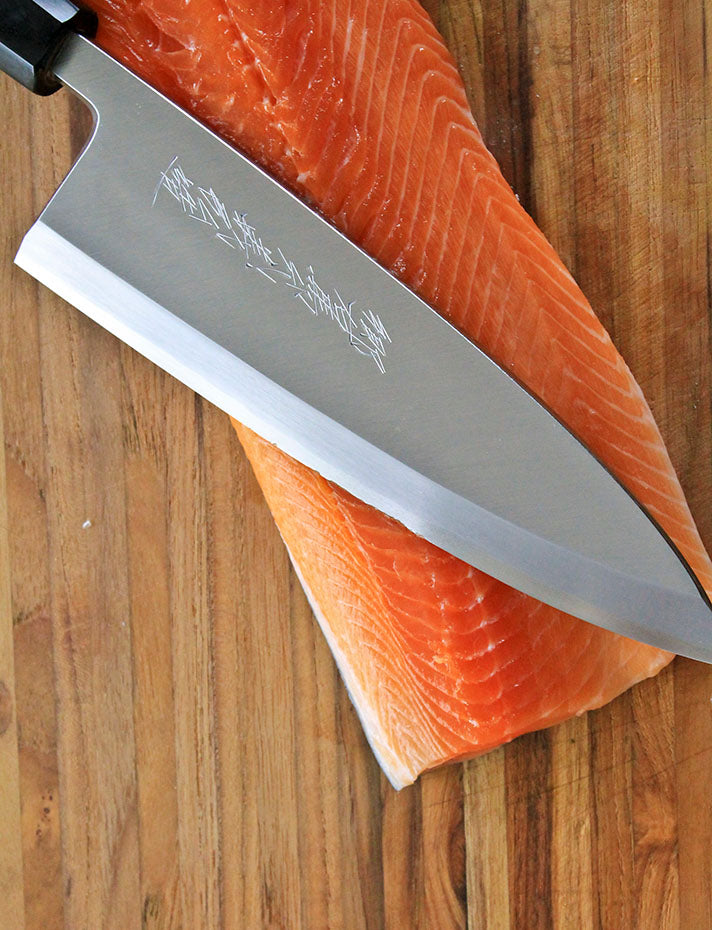
Shop Cutlery
Chef Curated Artisan Knives
Kitchen Knife Buyer's Guide
Our guided process will help you navigate the world of kitchen knives and choose the best tools for your culinary needs.
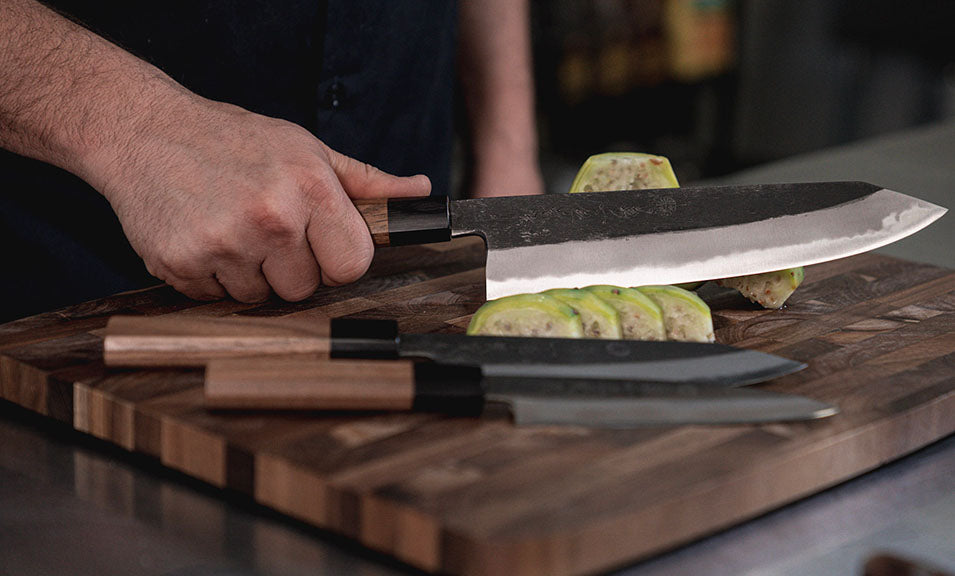
Stay Sharp!
Keep your favorite kitchen tools at their peak performance with our sharpening services and products.
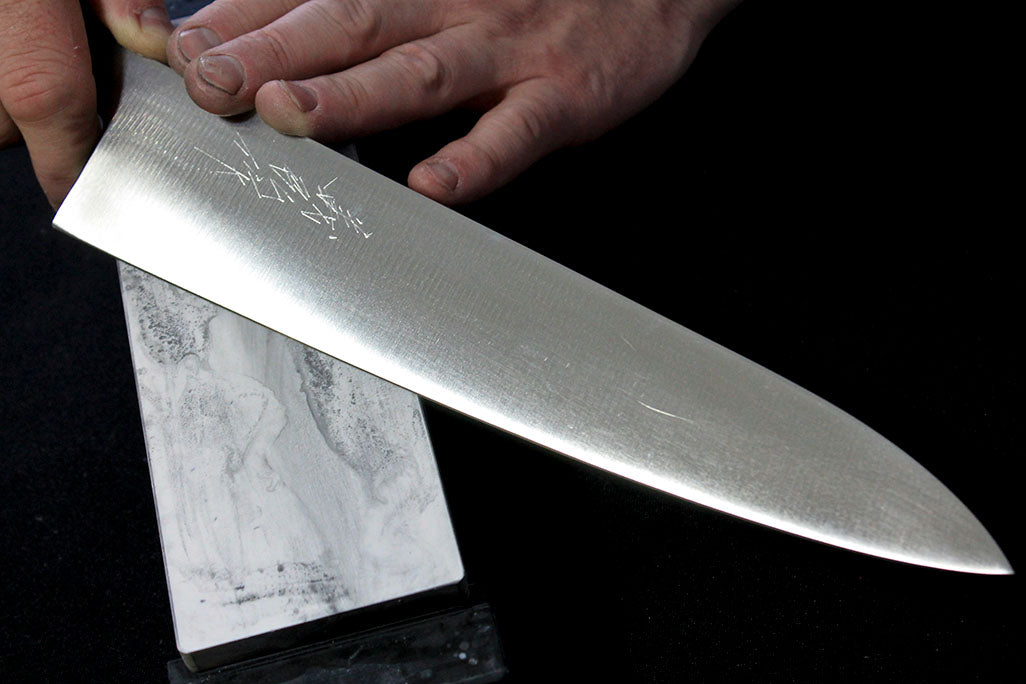
Gifts To Cherish For Generations
Gift a slice of excellence to the culinary explorer or aspiring chef in your life with a top-tier knife or kitchen tool, expertly crafted to enhance their kitchen adventures.
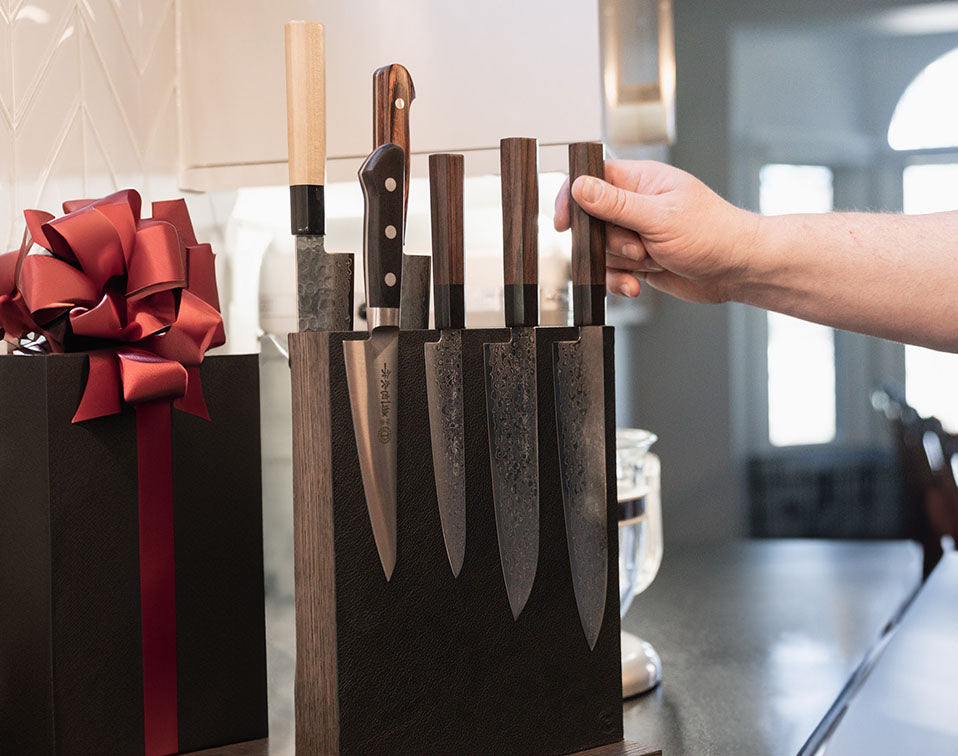

All About Knives
Learning Center
About Element Knife Company
CLICK HERE to learn more about our story and how Chef Elan found his way to curating the best cutlery in the world.
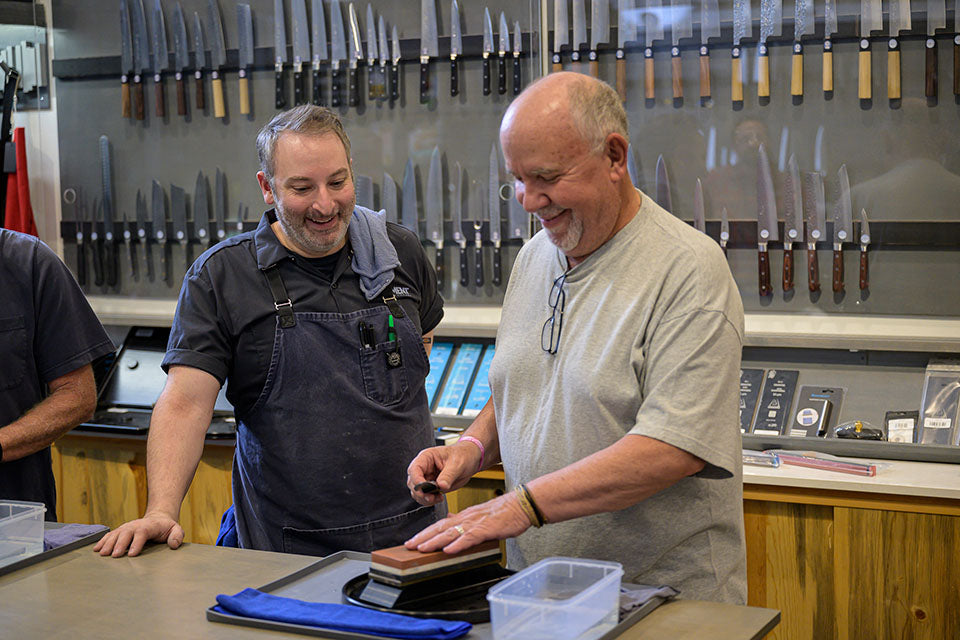

Knife Sharpening: Embracing Japanese Water Stones
The art of knife sharpening is an essential skill for any culinary enthusiast or professional chef. A keenly honed blade not only ensures effortless slicing and dicing but also enhances safety in the kitchen. Among various sharpening methods, the Japanese approach of using water stones has gained immense popularity for its precision and ability to preserve the knife's integrity. In contrast, sharpening with high-powered equipment like belt and wheel systems can pose risks if handled by individuals lacking the necessary expertise. This article delves into the reasons why hand sharpening on water stones, following Japanese methodologies, stands out as the superior choice.

The Elegance of Japanese Water Stones
Japanese water stones, also known as whetstones or sharpening stones, have been used for centuries to achieve razor-sharp edges on blades. They come in various grit levels, which determine the coarseness or fineness of the stone's surface. The process of sharpening on water stones involves wetting the stone's surface, which creates a slurry that aids in the sharpening process and reduces friction on the blade.
Precision and Control
The primary advantage of using water stones lies in the unparalleled precision and control they offer. The process allows the sharpener to refine the knife's edge gradually. Unlike high-powered equipment, which may remove excessive material quickly, water stones enable precise adjustments, preventing the risk of over-sharpening or altering the blade's shape unintentionally.
Preserving the Knife's Integrity
Japanese water stone sharpening is a gentle and gradual method that maintains the knife's original composition. This is particularly vital for high-quality knives made from premium steel. Preserving the knife's integrity ensures its longevity and performance, making it a worthwhile investment in the long run.
Developing Skill and Appreciation
Sharpening knives on water stones is a skill that demands patience and practice. As sharpeners hone their technique, they cultivate a deeper understanding of their tools and the nuances of blade sharpening. This process encourages a sense of appreciation for the craftsmanship of knives and the traditional Japanese approach to sharpening.

The Pitfalls of Belt and Wheel Sharpening
While belt and wheel sharpening systems are prevalent and have their merits in industrial settings, they are not the ideal choices for home or small-scale sharpening for several reasons.
High Material Removal Rate
Belt and wheel sharpeners, especially those with high-powered motors, can remove significant amounts of metal rapidly. This rapid material removal can lead to irreversible damage to the knife if not controlled skillfully.
Limited Precision and Control
Unlike the nuanced control offered by hand sharpening on water stones, belt and wheel systems can be challenging to maneuver with precision. For inexperienced sharpeners, this lack of control can result in uneven edges and a compromised cutting performance.
Risk of Overheating
The high-speed rotations of wheels and belts generate heat, and if not managed properly, this heat can damage the blade's tempering. This, in turn, reduces the knife's overall hardness and its ability to retain sharpness.
Potential Safety Hazards
Belt and wheel sharpeners require a solid understanding of pressure, angles, and techniques to prevent accidents. In the hands of an inexperienced sharpener, these machines can be dangerous and may lead to injuries.

The Dangers of Removing Too Much Metal
The significance of maintaining the right angle and pressure while sharpening cannot be overstated. When someone lacking the requisite knowledge or skillset attempts to sharpen a knife, they risk removing excessive amounts of metal. This can lead to the following potential harms:
Reduced Knife Lifespan
Removing excessive metal not only alters the blade's shape but also shortens the knife's lifespan. A thinner blade is more prone to chipping, warping, and becoming structurally compromised.
Loss of Balance
A knife's balance is crucial for comfortable and precise cutting. Removing too much metal from one part of the blade can throw off the knife's balance, making it challenging to use effectively.
Compromised Cutting Performance
Over-sharpening can lead to a blade that is too thin, resulting in reduced cutting performance. The knife may lose its ability to hold an edge for an extended period, defeating the purpose of sharpening in the first place.

Putting It All Together
Mastering the art of knife sharpening is a journey that requires dedication and the right approach. While high-powered equipment like belt and wheel sharpeners have their place in certain industrial settings, they are not suitable for the precision and care that kitchen knives require. Embracing the Japanese methodologies of hand sharpening on water stones not only ensures a razor-sharp edge but also fosters a deep appreciation for the craftsmanship of knives and the skill of sharpening. By avoiding the risks of over-sharpening and preserving the knife's integrity, sharpening on water stones becomes the preferred and safest method for maintaining the keenest edge on your beloved knives.
- Choosing a selection results in a full page refresh.
Quick links
Learn
Blogs
Cut Deeper
We have even more to offer: follow us on Twitter, Facebook and Instagram to keep up with all of the latest news and to take advantage of discount codes and other offers. Thank you for visiting our site and we look forward to connecting with you!
Sign up to get the latest on sales, new releases and more!
!


































